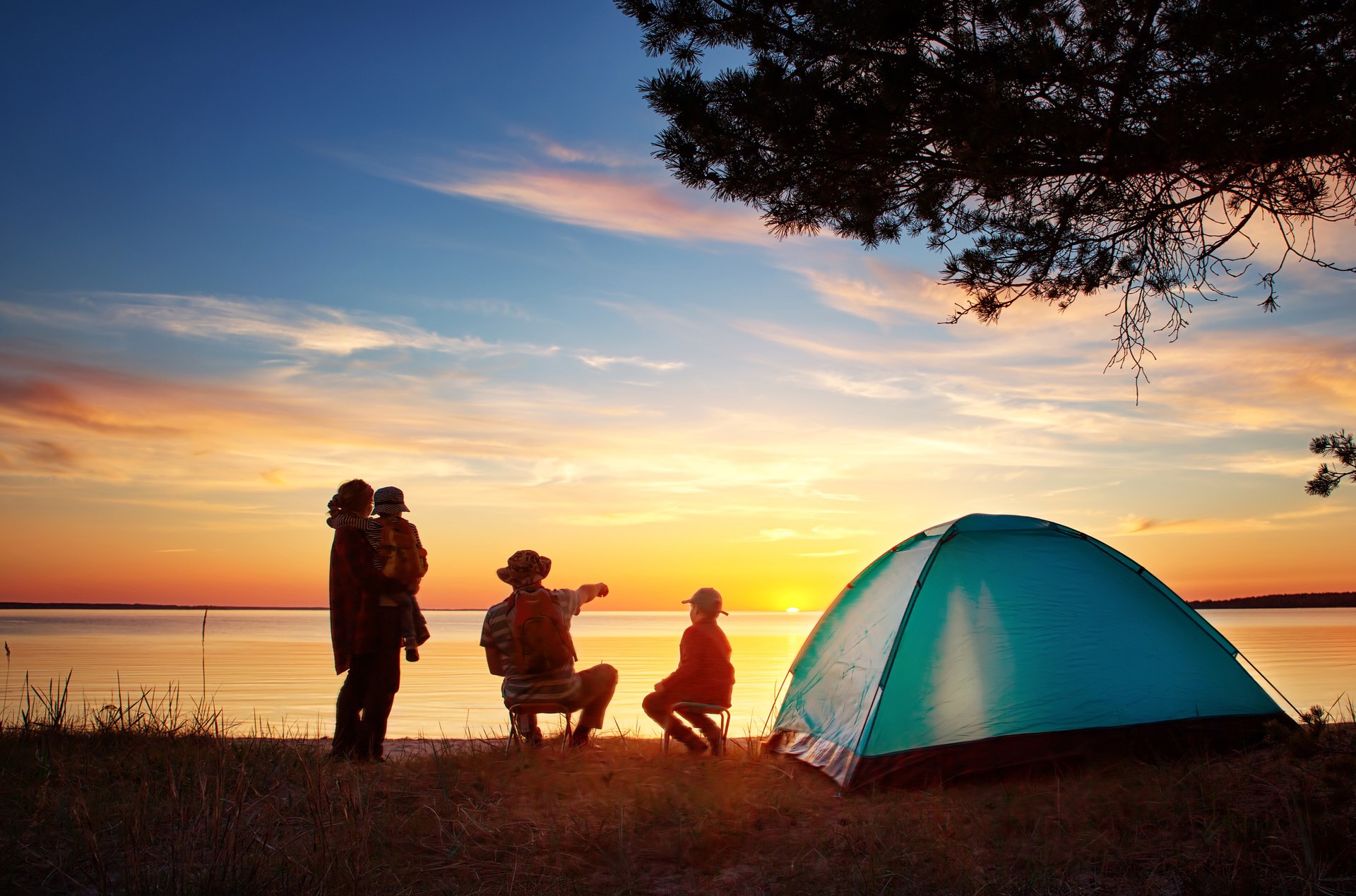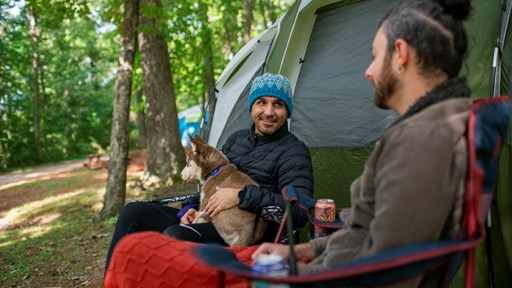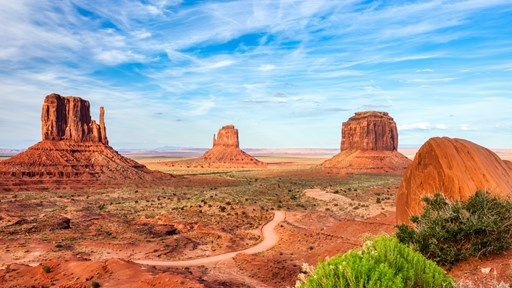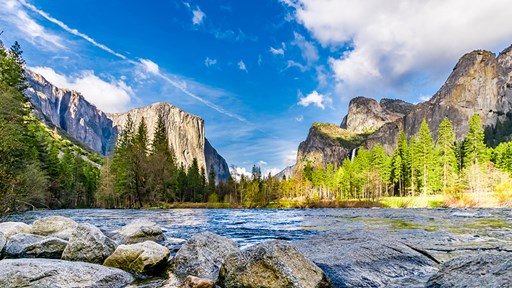The Ultimate Guide to Camping Terminology
Tent camping terminology
RV camping terminology
Hiking terminology
Backpacking terminology
If you are new to camping, terms like “guyline” and “bivy sack” may sound like a foreign language. Perhaps you know what a “blaze” is, but have you ever heard of its trail hiking cousin the “cairn?” And if you venture out into the remote wilderness, you may even find yourself in the “backcountry” doing some “boondocking” or sleeping in a “bivouac.”
At Kampgrounds of America, we believe that everyone should have the chance to enjoy the great outdoors, so we are here to help you make sense of some common and not-so-common camping terminology. This guide to camping terms and their meanings will cover terms you may hear at your campsite, see on a trail map or encounter while shopping for camping gear. With a little help, you will be ready to pack your “rucksack” and head out in your “rig.”
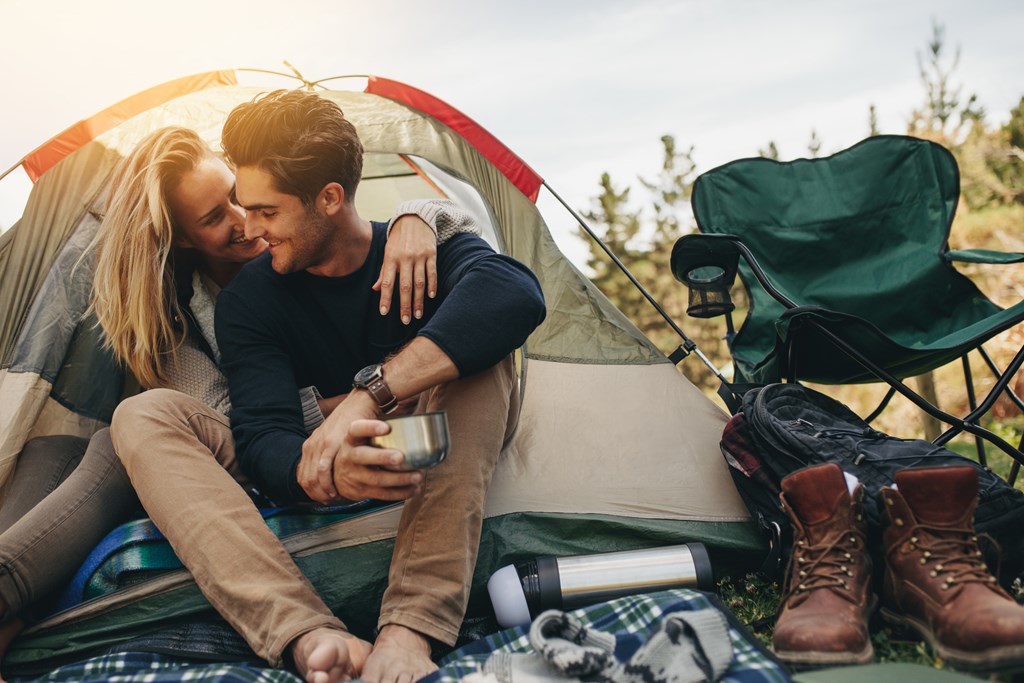
Tent Camping Terminology
If you are going to be tent camping, these are some terms you will likely hear in your adventures:
1. A-frame: This term describes tents that resemble the letter “A” when viewed from the front. A-frame tents, also called “ridge tents,” are an older style of tent that was originally built using a horizontal pole with vertical supports at the end and canvas stretched around the structure. These tents often used tie outs and guylines (which we will define later) for improved stability. A-frame tents are constructed of more familiar materials like nylon and use aluminum poles for their structure. A-frame tents are typically not very large and are best-suited for one or two people.
2. Bear bag: Bear bags are waterproof bags that campers use to protect their food and cooking supplies while camping in regions where bears live. These protective bags are attached to a rope so that they can be suspended out of the reach of bears and other animals. The practice of hanging bear bags is sometimes called “treeing,” and a bear bag that is hung up is sometimes called a “bear hang.”
3. Billy: A billy, or “billy can,” is a small metal container used to boil water or cook food over a campfire. Billy cans typically have a handle on the top for convenient campfire cooking, but makeshift billy cans may also be made out of coffee cans or other metal containers. The billy originated in Australia and has since become a recognized symbol for bush culture.
4. Car camping: When tent camping is done at a campsite where the camper’s car is parked nearby, it is sometimes referred to as “car camping.” Car camping is a popular form of camping for those who do not want to carry all of their supplies in a backpack, and it is also a great option for families. It allows campers to bring more equipment and gear for a more comfortable camping experience and more extensive campsite cooking options.
5. Carabiner: This useful tool is a metal clip with a spring gate or threaded closure. Carabiners are available in many sizes and can be used to attach ropes and anchors while climbing or simply clipping a water bottle to a daypack.
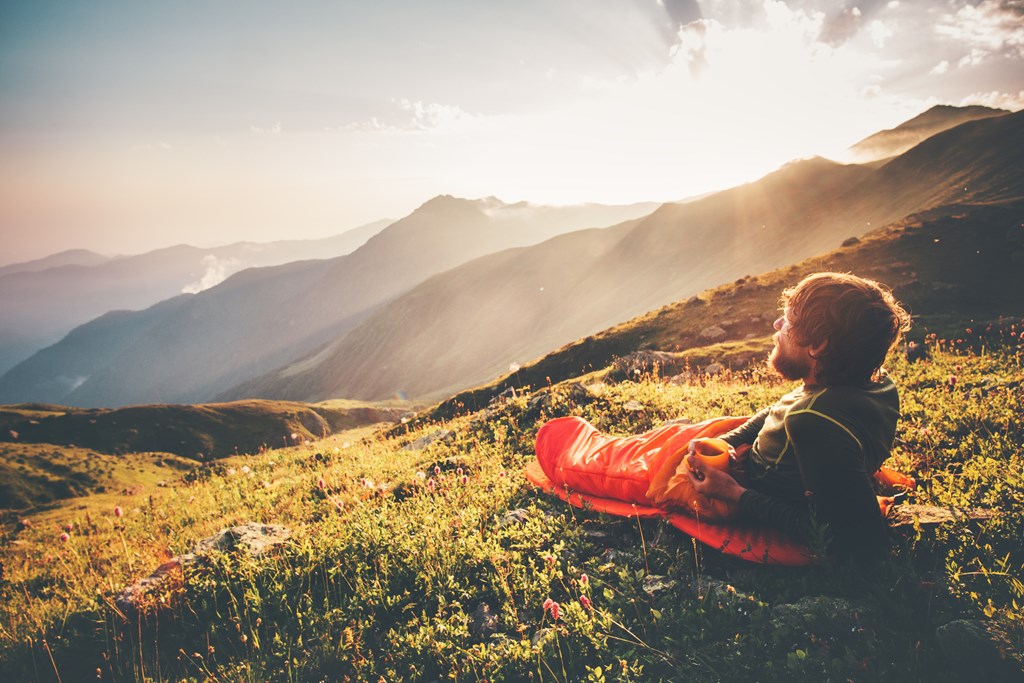
6. Cowboy camping: Cowboy camping describes sleeping under the stars without a shelter. For those who enjoy roughing it, you can camp like a cowboy with a sleeping pad, sleeping bag or nothing at all. Cowboy camping requires no tent or shelter, keeping your backpack light and your adventuring free.
7. Dome: This shape of tent is one of the most common styles for camping tents. Most dome tents have lightweight aluminum tent poles that intersect at the peak of the tent to create a curved structure. These poles run either inside or outside of the tent fabric and are held in place at the base of the tent by stakes, clips, straps or pegs. While classic dome tents are square or rectangular, dome tents are available in irregular shapes and sizes to accommodate any camping crew, from couples to large families.
8. Double-wall construction: Most dome tents will either have a double-wall or single-wall construction. Double-walled tents have an inner wall, called a “canopy” that is made of a breathable and lightweight material. The canopy of a double-walled tent is typically not waterproof. The outer layer is called a “fly” which is waterproof and protects the canopy from wind and rain. A single-walled tent has only one layer of fabric that is waterproof and provides insulation. Single-walled tents are made of lightweight material, but they may not be very breathable or allow much airflow inside the tent.
9. Four-season tent: Most tents are categorized as either four-season or three-season tents. Four-season tents are designed to be used in any weather conditions, while three-season tents are meant to be used only in spring, summer and fall. Four-season tents offer better insulation and durability to withstand harsh winter weather.
10. Freestanding tent: Some styles of tents require stakes or guylines for stability, but freestanding tents do not require any additional support. The tent poles of a freestanding tent often connect into a peg at the base of the tent allowing it to stand up without being staked into the ground.
11. Gear loft: Some camping tents have a gear loft inside that provides an additional storage space for small items. The gear loft is most often made of a small panel of mesh or fabric that can be hooked inside the roof of the tent to serve as an overhead shelf. Gear lofts can also be purchased individually and added to a tent.
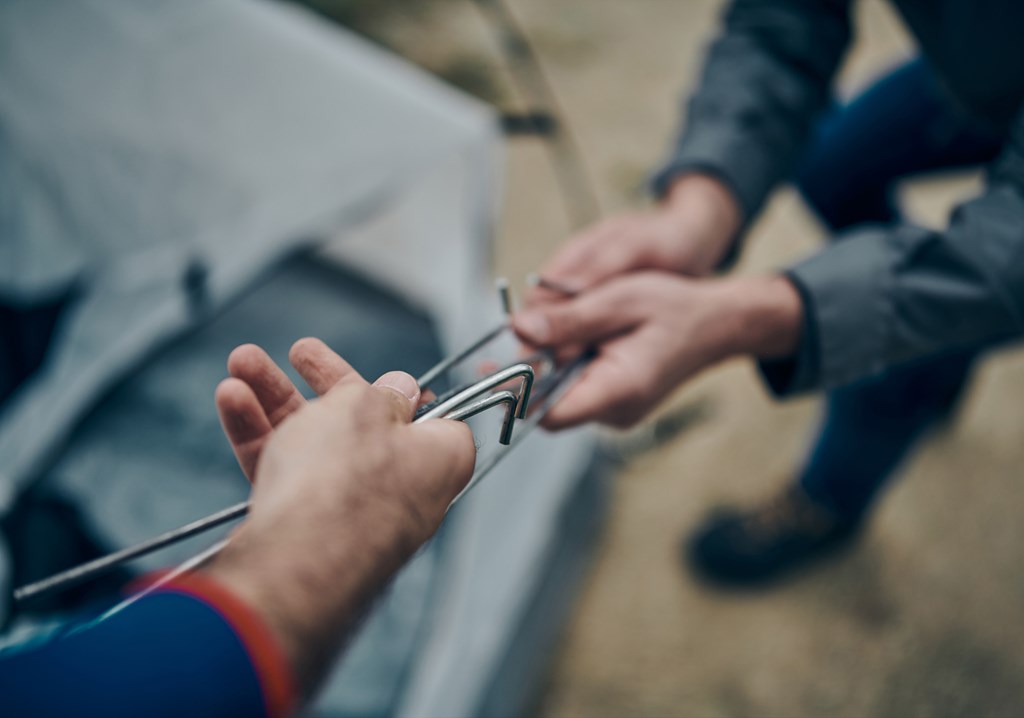
12. Ground stakes: Ground stakes are small anchors used to secure a tent to the ground. Tent stakes are usually made of metal and have a small hook or ridge at the top. For winter camping, special wide stakes called “snow stakes” can be used to ground a tent in the snow.
13. Guyline: Guylines are cables that are used to add stability to a tent and help keep the tent dry. Guylines are attached to the tent’s rain fly and then staked to the ground or tied to nearby trees or rocks. This increases the tension of the tent surface to better direct rain away from the tent and to keep the tent stable in windy conditions. Some tents may have guylines built-in, while others require guylines to be tied to loops in the rain fly.
14. Kindling: When building a campfire, many different sizes of wood must be used to get the flames going. Kindling is typically the second smallest material used to build a fire and includes thin sticks or wood. For the best results when attempting to build that perfect campfire, kindling should be dead or very dry.
15. Mummy bag: This type of sleeping bag is designed to fit snugly around your body to conserve heat. Mummy bags have a hood at the top to keep your head warm and taper at the foot to protect your toes from the cold. In addition to their efficient warmth, mummy bags are also smaller and easier to pack than rectangular sleeping bags.
16. Pole sleeves: Pole sleeves are fabric tunnels that run along the inside or outside of the tent. When pitching a tent, the tent poles slide into the pole sleeves.
17. Potable water: Potable water is another term for drinking water and is safe to consume without any additional water treatment. If you are hiking or adventuring outdoors, make sure any water you drink is potable or use a water purification system first.

18. Rain fly: In double-walled tents, a rain fly is used as an additional covering to keep the tent dry and protected from the wind. Rain flies may cover only the top of the tent so campers can still see out of the tent windows and enjoy greater air flow. Full-coverage rain flies cover the entire tent to provide superior protection from the elements.
19. Shell: The outer layer of a sleeping bag or outdoor clothing item is called the shell. When choosing the right camping gear, look for a shell material that suits your specific needs, whether it be water resistance, insulation, breathability or durability.
20. S’mores: We hope you already know what this camping term is all about, but if you have never tasted this popular camping dessert, you are in for a treat. S’mores are made of a toasted marshmallow sandwiched between graham crackers with a piece of chocolate inside. True camping s’mores are made by toasting the marshmallow over a campfire, but s’mores can also be made at home over a stove. While classic s’mores are composed of the simple recipe of marshmallow, chocolate and graham crackers, there are many creative s’mores recipes to suit any taste. Explore a few of KOA’s favorite s’mores recipes for some inspiration.
21. Stake puller: When it is time to pack up your campsite, a stake puller can be used to help remove tent stakes from the ground. This tool is particularly useful when the soil is cold or hard.
22. Tinder: Tinder is the first type of fuel used when building a campfire. Tinder can be any highly combustible material that will begin to smolder with a spark. Tinder is used to create the initial flame for a campfire that then catches the kindling on fire and eventually the larger pieces of wood.
23. Temperature rating: When shopping for a sleeping bag, the temperature rating can help you determine which sleeping bag is right for your climate and season. Sleeping bag temperature ratings are a universal standard controlled by the International Organization for Standardization and include the comfort temperature, maximum temperature, limit temperature and extreme temperature. These sleeping bag temperature ratings represent the temperature when an average person can sleep comfortably, may perspire slightly, may be nearly cold but still in equilibrium and may be at risk of hypothermia, respectively.
24. Tent pad: A campsite that is designed for tent camping may have a designated tent pad. Tent pads are areas of sand, cement, gravel or mulch where you can pitch your tent on a level surface. In campsites without a tent pad, campers may need to search for the flattest spot to set up their tent.
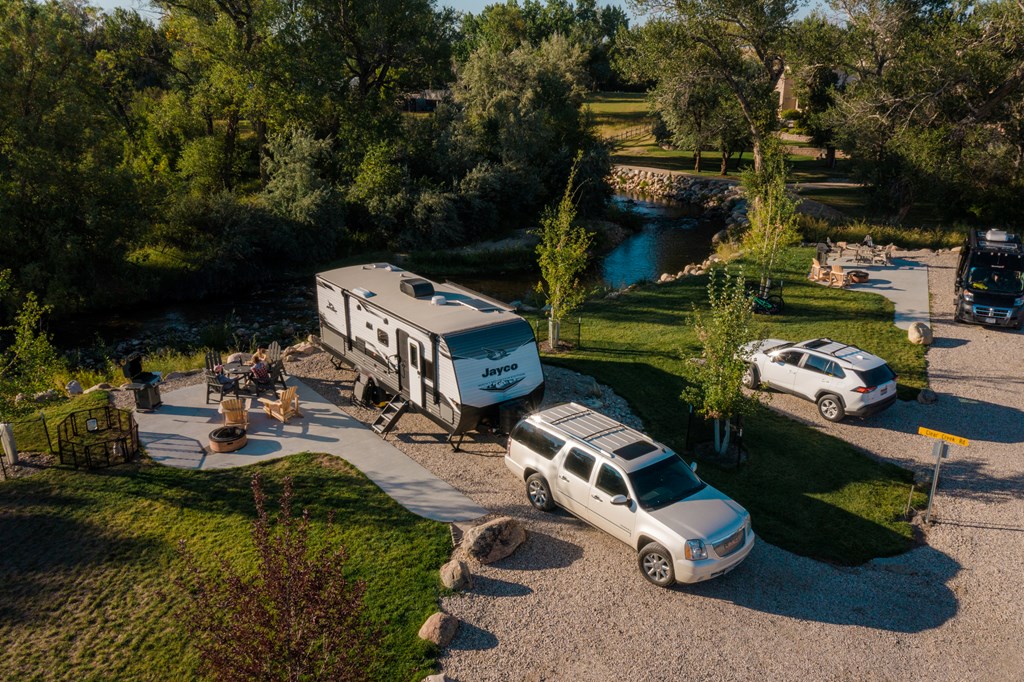
RV Camping Terminology
For RV camping, some terms you will want to know are:
25. Back-in site: When searching for an RV campsite, you may hear some sites described as back-in sites. These campsites require the RV driver to back up into them. RV campsites can also be “pull-through sites” which are those that the driver can enter from one end and exit from the other.
26. Boondocking: Also called “dry camping,” boondocking describes RV camping in campsites without any electric, water or sewer hookups. Boondocking allows RVers to camp in remote locations by relying on the self-contained facilities in their RV.
27. Full hookup: RV campsites that are described as full hookup sites will have access to the campground’s electric, water and sewer supplies. RVers camping at full hookup sites will be able to connect to these utilities for easy and comfortable camping.
28. Hula skirt: When traveling on rocky or dusty roads, RVs can kick up a lot of debris and stones. A hula skirt can be attached to the rear bumper of an RV to prevent this debris from hitting vehicles behind the trailer.
29. Rig: Rig is one of the many camping terms used to refer to an RV. Whether you call your RV a rig, trailer, camper or motorhome, whatever RV nickname you choose is up to you and your camping style. Here at KOA, we welcome RVers of every style, no matter which term you prefer.
30. Self-contained: While most RVs use external hookups to access utilities at a campground, some RVs can supply their own electric, drainage and water needs. These RVs are called self-contained RVs and can be a great option for more comfortable boondocking.
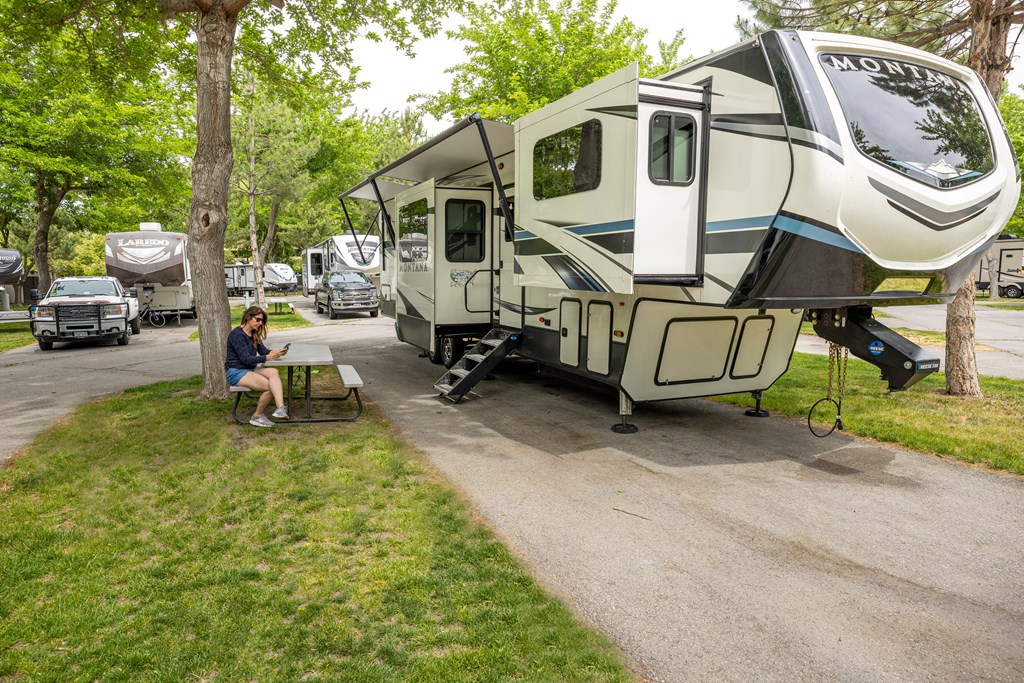
31. Slide-out: Some RVs have slide-outs that can be pushed out to expand the available living space and then retracted when traveling.
32. Snowbird: Snowbird is a term used to describe RVers who head south in the winter to escape colder weather up north. At KOA, we welcome both snowbirds heading south and RVers who want to stick out the winter months. With many KOA campgrounds open year-round across the country, you can migrate to any climate you want to enjoy the winter.
33. Toy hauler: An RV that is capable of carrying of carrying motorcycles, dirt bikes, ATVs or other outdoor “toys” inside of it is often called a toy hauler. These RVs have a large interior space designed for safely transporting equipment for those who love outdoor adventure.
34. Underbelly: The floor surface or underside of an RV is often called the underbelly. The RV underbelly includes water hoses, pipes and other valves. In the winter, RVers who hope to keep using their RV often add protective material to the RV underbelly.
35. Winterizing: Those who want to use their RV all year round may need to add some protection from the snow and weather and prepare their RV for the cold. Those storing their RV for the winter season should also take measures to ensure their camper is protected in the winter. This process of preparing an RV for winter is often called winterizing. If you want to skip winterizing your RV, become a snowbird and head to warmer weather.
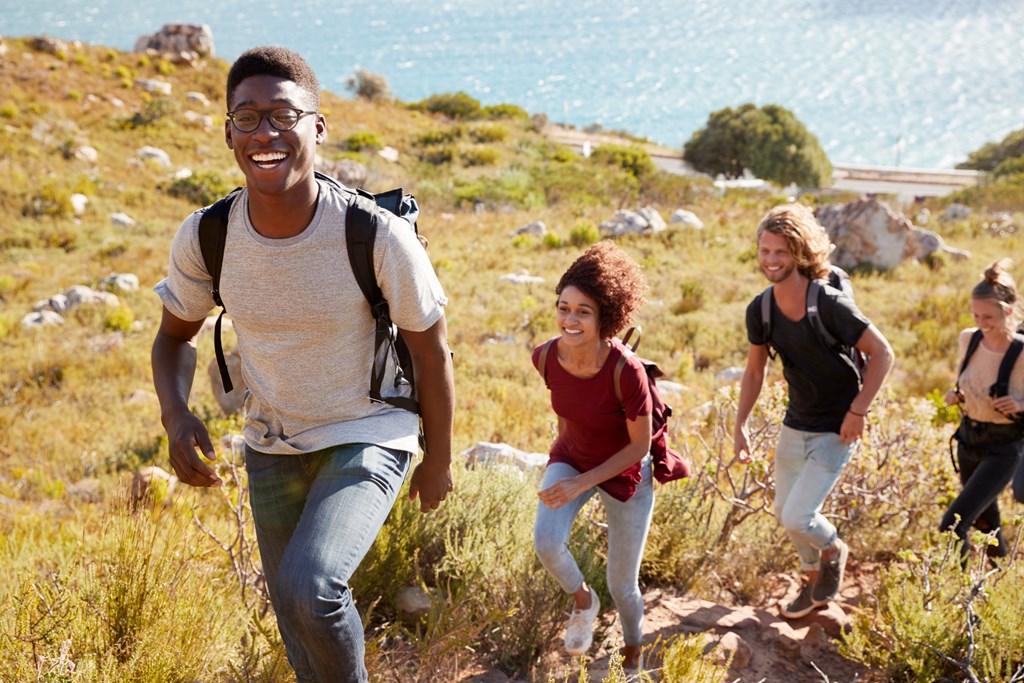
Hiking Terminology
Whether you are heading out for a longer excursion or just a short day hike from your campsite, these are some of the hiking terms you will want to be familiar with:
36. Blaze: Blazes are small rectangular symbols painted on trees to mark a trail. If several trails are located in the same area, different colored blazes may be used for each trail to distinguish them. Trail blazes help hikers identify the trail they are on and stay on the correct path. When a trail turns or comes to an intersection, a “double blaze” is used to indicate which direction hikers should go. A double blaze has two rectangles with the upper blaze offset slightly toward the direction the trail turns.
37. Boardwalk: In wetlands or other areas with fragile wildlife, a boardwalk may be built so hikers can traverse the area without causing harm. Boardwalks on hiking trails resemble the wooden plank boardwalks many people are familiar with at their favorite beaches. More primitive boardwalks can be created out of logs, planks or rocks so that hikers can pass wet areas or creeks. These crude bridges are called “puncheons.”
38. Cairn: A cairn is a small stack of rocks that may be used in place of a blaze to mark a trail. Cairns are often used in areas where trees are not present, such as a desert or alpine region. The term “cairn” comes from the Gaelic for “heap of stones,” and cairns have been used around the world to guide explorers and mark trails throughout history.
39. Daypack: A daypack is a small backpack designed to hold enough gear and food for a single day of hiking or other outdoor activities. Daypacks have enough space for essential items, such as flashlights, snacks, water and an extra layer of clothing, but they are not large enough for overnight gear.
40. Leave No Trace: When exploring the wilderness or hiking in a state park, you may see signs reminding you to “Leave No Trace.” This practice describes enjoying the outdoors without leaving anything behind when you leave or disrupting the wildlife in any way. Leave No Trace reminds outdoor enthusiasts not to litter, disturb plants or leave food items behind. If you successfully Leave No Trace, hikers coming after you should see no signs that you were there. The principles of Leave No Trace were created by the Leave No Trace Center for Outdoor Ethics to promote conservation and sustainable interactions with nature. Leave No Trace is sometimes abbreviated “LNT” and may also be referred to as “packing out.”
41. Ridge: A ridge is a narrow and long elevation of land, often along the top of a mountain. Ridge trails are hiking trails that follow the ridge of a mountain or chain of hills and often offer excellent vistas along the way.
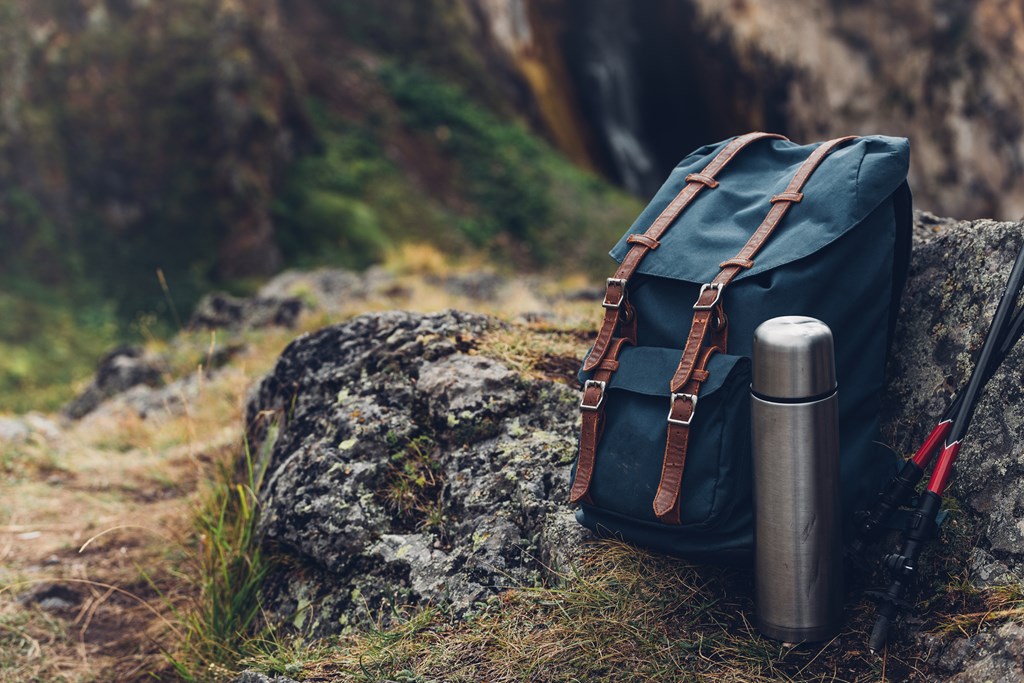
42. Rucksack: A rucksack is a type of backpack with shoulder straps that is often used by hikers, campers and other outdoor adventurers. Rucksacks are usually made of canvas or other durable material. These sturdy bags are also generally designed to fit more gear than a regular backpack, making them a great addition to your camping gear list.
43. Summit: The summit is the highest point of a mountain and often offers incredible views of the surrounding valleys or mountain ranges. Some hiking trails may also have a “false summit” which is a peak that appears to be the highest point but actually is not. False summits can be discouraging when hiking challenging trails, but they also mean there are even better views ahead.
44. Switchback: Trails that zigzag up a mountain or ridge can be described as having switchbacks. While switchbacks increase the length of the trail, they make it easier to climb a steep slope by creating a more gradual ascent.
45. Topographic map: This type of map shows land features, roads, bodies of water and elevation. Hikers often use topographic maps to view the change in elevation of a mountain or to locate a nearby water source.
46. Trailhead: The beginning of a trail or an entry point onto a long trail is referred to as a trailhead. Trailheads are typically marked with signs or blazes to indicate that you are in the right spot for starting your hike.
45. Walk-up: While many high altitude summits require climbing or bouldering, other summits can be reached simply by walking. These accessible summits are sometimes referred to as walk-ups. Those who do not have climbing experience can still enjoy epic views from high altitude walk-up summits.
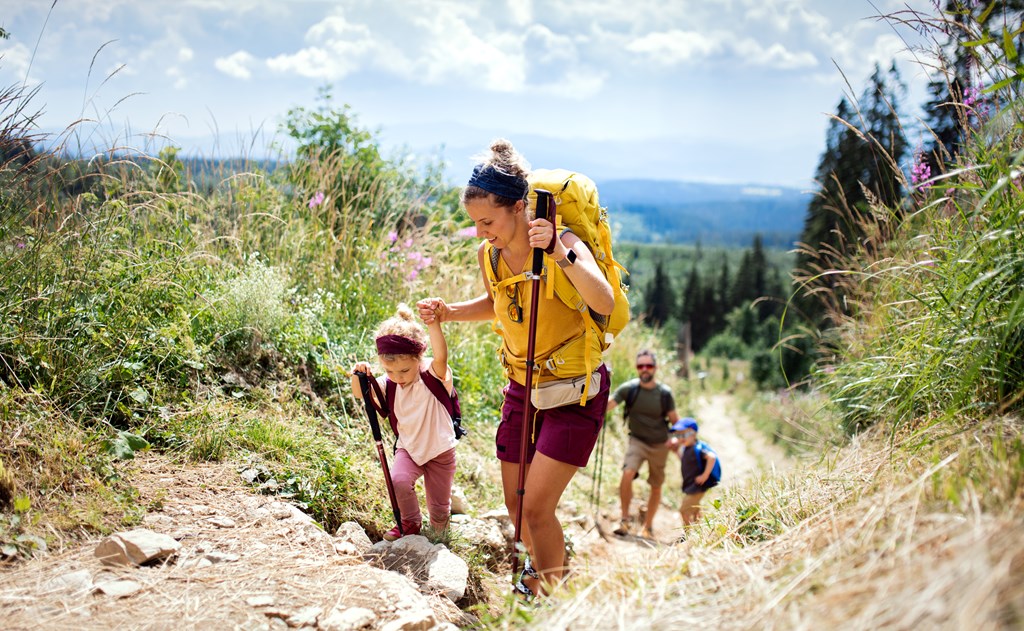
Backpacking Terminology
Backpacking trips often involve at least one overnight on the trail. Here are some terms that are helpful to know before you head out:
46. Backcountry: Backcountry refers to remote areas of forests, public land or national parks that are uninhabited and not accessible by road. Backpackers often venture into these wilderness areas for peaceful camping away from civilization. If you want to give backcountry camping a shot, make sure you are confident in your wilderness and navigation skills and check state regulations for camping in backcountry areas.
47. Bearing: When navigating outdoors, your bearing is the direction of travel from your current position to a future destination or landmark. A bearing is expressed in degrees from zero to 359, with zero being magnetic north.
48. Bivouac: When backpacking, a hiker may be forced to stop and set up a temporary campsite due to bad weather. This improvised campsite, called a bivouac, may consist of a tarp, sleeping bag or bivy sack, but it does not include a tent. Climbers may also bivouac on ledges during an extended climb that lasts more than one day.
49. Bivy sack: This small and lightweight sack can be used as a temporary shelter for sleeping that keeps your sleeping bag dry and adds extra warmth. Most bivy sacks are comparable in size to a sleeping bag but are made of lighter material. Bivy shelters are a newer version of a bivy sack that includes small poles or hoops to lift the material away from the camper’s face to create a structure similar to a one-person tent.
50. Primitive campground: While many campgrounds, like KOA, offer amenities like restrooms, water and electricity, primitive campgrounds do not offer any of these features. A primitive campground may simply be a plot of land or land area designated for camping. Primitive campgrounds do not have fire pits, and campers should check state regulations before building a fire at a primitive campsite.
Try Camping at KOA
If you want to brush up on common camping terminology before your next vacation, KOA is here to help you learn the lingo you need to camp like a pro. When planning your next outdoor adventure, consider a KOA campground for your destination. With more than 500 campgrounds across North America, you are sure to find a KOA campground anywhere you want to travel. KOA offers campsites for every camping style including Deluxe Cabins, pull-through and back-in RV Sites and traditional tent camping sites. Looking for something different? Try one of KOA’s unique lodging options for a camping trip you will never forget.
Now that you know the essential camping terminology, search for a KOA campground to put your new camping knowledge into action.
About the Author: Kampgrounds of America
Kampgrounds of America is the largest system of open-to-the-public campgrounds in the world, with over 500 locations across the United States and Canada. Founded in Billings, MT in 1962, KOA’s family of campground brands – KOA Journey, KOA Holiday and KOA Resort – today serve more than a million camping families each year. KOA is dedicated to “connecting people to the outdoors and each other” by providing people with a variety of camping experiences and the information they need to make the most of their camping trip. Read more of their camping and travel resources by visiting KOA.com/blog.



















